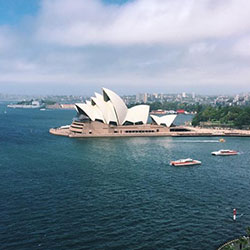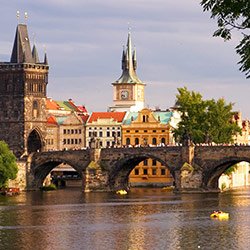Beyond the Classroom: Immersive Learning while Studying Abroad in Barcelona, Spain
Study abroad semesters are often summed up with stories of travel, learning your host city's culture, and meeting tons of new people from all over the world. However, a massive factor for all while choosing to study abroad is the academics of your chosen program. Upon my arrival in Barcelona, I was unsure of what to expect once my courses picked up… lecture halls? A professor I’d be too intimidated to connect with? Missing out on experiencing Barcelona’s abundant culture in the confinement of a windowless classroom? Luckily, I was pleasantly surprised to experience the hands-on learning and the support from CEA CAPA academic staff in Barcelona.
Immersive Field Studies
My familiarity with class structure at my U.S. university was tossed out of the window upon my arrival to the CEA CAPA study center in the heart of Barcelona, Spain. I was excited and eager to dive into content when seeing that nearly all of my course syllabi contained field studies.
I enrolled in four courses here at CEA CAPA Barcelona: Analyzing and Exploring the Global City: Barcelona, Food & Culture in Spain, Blogging & Storytelling in the 21st Century, and Beginning Spanish II.
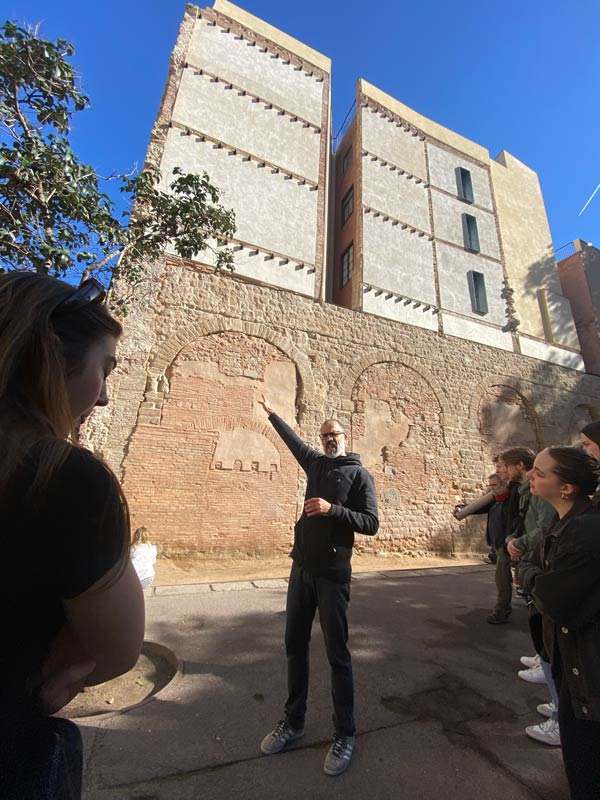
Tour of Roman Barcino with Analyzing and Exploring the Global City!
My Analyzing and Exploring the Global City: Barcelona course facilitated a schedule where were in the classroom discussing a topic of Barcelona’s rich history, and the next meeting we had a walking tour with my instructor in that exact area to visualize the content! We explored old Roman Barcino, the medieval walls of Barcelona, and even had a stop at the Arc de Triomf.
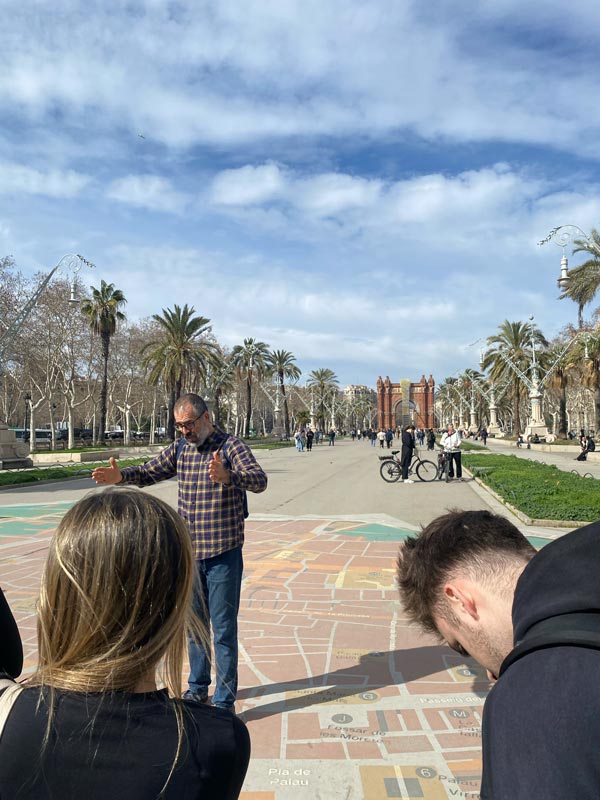
My instructor explaining the significance of the Arc de Triomf on a field study.
Food & Culture in Spain and Beginning Spanish II have both led me down the rows of a local Spanish market, noting the intricacies of the Mediterranean diet and how to order these ingredients in the local language. My Food & Culture class also met in a kitchen on a Tuesday evening to split into groups and each cook a different typical Catalan tapa from scratch. Afterwards, we sat at a long table as a class and indulged in calamari, gazpacho, pan con tomate, and more!

Tapas workshop with my Food & Culture in Spain class.
Class Size & Structure
We all had that first-year experience of walking into one of the first classes of college in a massive auditorium with hundreds of eyes staring at you. These intimidating settings with little-to-no opportunity for a relationship to be made with a professor can be challenging. These fears can be tossed out of the window for your study abroad semester with the unique layout of study centers at CEA CAPA.
My course sizes range from eight students in my Beginning Spanish II course to around 25 in my class centered on Blogging and Storytelling in the 21st Century. These meeting sizes make for intimate lectures, close friendships being made, and consistent communication with your instructors. Teachers made it a mission to learn their students' names with ease, and always extended a hand as they’re all too familiar with your hesitancy to study in a new country. These class sizes were welcoming during the first few weeks of my study abroad semester, where it was easy to detect familiar faces that I shared a class with around the city.
Besides the number of students enrolled in each course, their conversation-heavy formatting opens the floor to honest dialogue. Instructors at CEA CAPA are resources for all questions—my Food & Culture professor gave us tons of restaurant recommendations in the area!
The unique class size and formatting of my courses at CEA CAPA in Barcelona make for a refreshing change from my bustling U.S. university. Students' academics through CEA CAPA can also be supplemented through active learning experiences, where course grades are given for truly living and experiencing your host culture.
Active Learning
CEA CAPA study abroad programs offer participation in an array of Active Learning activities. These activities are included in the cost of your program, and offer dozens of opportunities for students to submerge themselves into the culture of Barcelona.
All four of my current courses incorporate Active Learning into the syllabus as percentages of our grades for participation. This form of learning extends past the walls of the CEA CAPA Study Center and even beyond Barcelona.
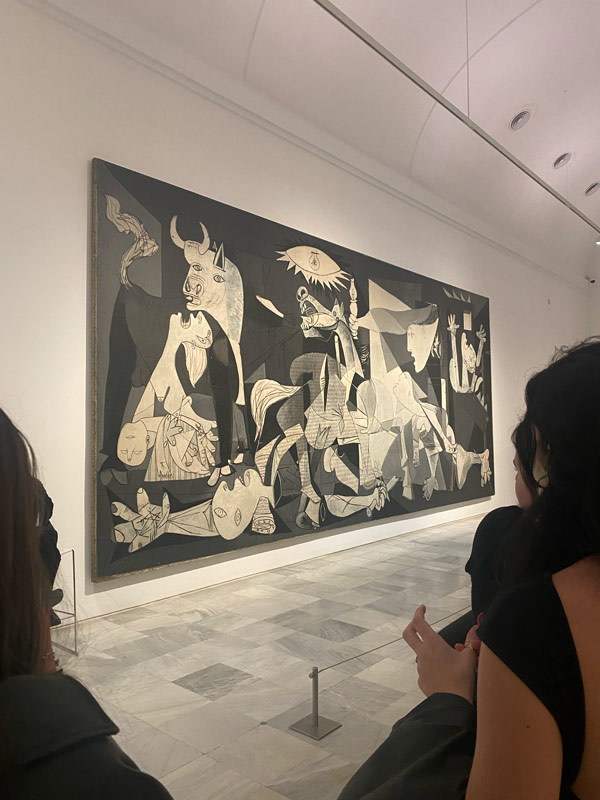
Picasso’s “Guernica” seen during a Madrid weekend trip.
Some Active Learning experiences I had the pleasure of partaking in have included a day trip to Sitges, a weekend trip to Madrid, and a winery tour in the hills of the Penedes wine region!
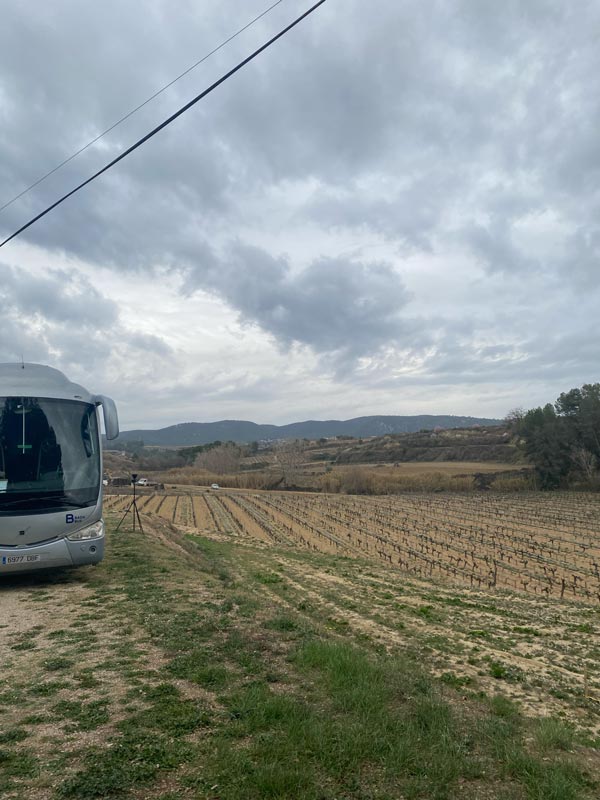
Beautiful winery on the Penedes Active Learning trip!
Key Takeaways
Studying abroad comes with many necessary adjustments and culture shock—even when it comes to studying! Taking advantage of the free Active Learning opportunities offered to you during your time abroad with CEA CAPA, and basking in the strolls down the historic streets of Barcelona, will make for the most enriching academic experience away from home.

